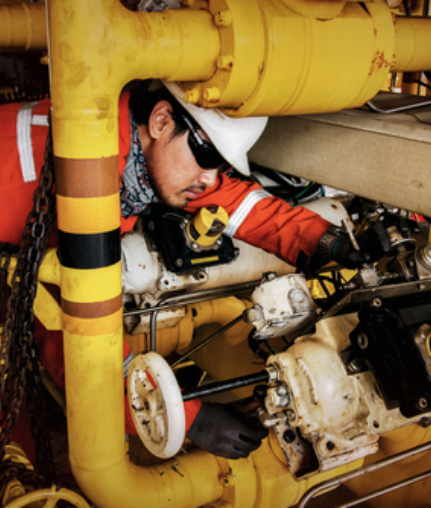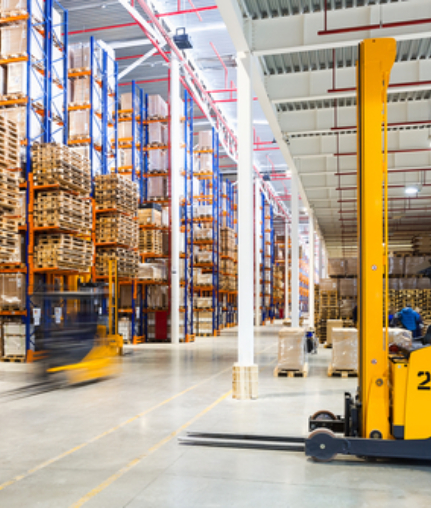
Best Practices Guide: How to Label an IT and Data Center
Some time ago, managing a data centre was so straightforward. However, due to the unavoidable circumstances of processing more and more data, the management of data centres keeps growing in complexity. It has complicated the situation that now there are new operational factors such as power, cooling, network rack space, and CPU availability being taken…
Best Practices Guide: How to Label an IT and Data Center
Best Practices Guide: How to Label an IT and Data Center
Some time ago, managing a data centre was so straightforward. However, due to the unavoidable circumstances of processing more and more data, the management of data centres keeps growing in complexity. It has complicated the situation that now there are new operational factors such as power, cooling, network rack space, and CPU availability being taken more seriously.
In addition, this is influenced by other factors leaning towards IT systems, and the data centre’s infrastructure components that play a key role in running the entire establishment. Efficient labelling is not only a major determinant in ensuring effective data centre performance, but it also looks at high-performing enterprise networks.
To maintain a smooth running of data centres and network facilities, it is important to establish what is being deployed where, what the purpose of each component is, and what it ultimately connects to. That is why having server labels is a great way of increasing the efficiency of data centre troubleshooting and management.
Data Centre Core Components
As we already know, the data centre is the department in an enterprise that houses and maintains back-end Information Technology (IT) systems and data stores.
The core components of a data centre include:
Facility
Facility components are very important in regards to the data centre. They include the following areas:
- Physical location – the data centre can be a separate facility by itself, or it can be within the same building
- Physical Space – this comprises of;
- Data Room Space – houses the IT equipment.
- Mechanical and Electrical Space – houses the cooling and electrical panels, the UPS (Uninterruptible Power Supply) and its batteries.
- NOC Space – allocated outside the data centre for operators to monitor data centre activities
- Staging Area Space – used to unpack the new IT equipment before deployment to the data centre
- Data Room – comprises of;
- IT racks and cabinets
- CRAC units required to cool down IT equipment
- Physical Access – includes;
- Access control to the data centre
- Surveillance i.e. CCTV
IT Infrastructure
This has to do with the following areas:
- IT servers
- Communication equipment:
- Core Switch/router
- ISP equipment linking the data centre to the outside world
- Patch Panels to connect IT equipment together
- Storage Equipment:
- Storage Area Network (SAN) – a shared pool of storage devices to multiple servers.
- Network Attached Storage (NAS) – specialised for saving files by hardware, software or configuration.
- Environmental Sensors:
- Smoke detection sensors
- Water leakage detectors
- Temperature/Humidity detectors
Electrical Equipment
This deals with all power-related devices such as:
- Backup Generator(s) which can be:
- Prime Power Rating type
- Standby type
- ATS (Automatic Transfer Switches) – used to transfer the load in case of city power failure
- UPS
- PDU (Power Distribution Unit)
Mechanical Equipment
The mechanical part of the data centre is meant for the following:
- Cooling containments:
- Cold Aisle type
- Hot Aisle type
- Computer Room Air Conditioner (CRAC) units – to cool down IT racks
- Chiller Plants (located on top of the building) – Support the cooling system
- Raised Floor – allow cold air to reach IT equipment
How to Properly Label a Data Centre
Managing cables in the data centre can prove to be a complex and difficult task. There are usually two extremes whereby organisations either do not use any form of labelling or use it on everything to the point of confusion. The way to go is to find a happy medium between the two by implementing a smart solution that will simplify and contribute to a more efficient working environment. Barcode identification is a reliable solution in data centres when it comes to:
- Internet Server – It is important to ensure that your server labels are identifiable from the front to the back. Typically, both ends of the cable should always be labelled. Ultimately, barcode labels for internet servers ensure that when there is a physical plant problem, the labelling will making it easier to locate and sort out the issue.
- Server Racks – When it comes to server racks, the organisation of the server cables is crucial. Our server labels were designed to arrange your network cabinets in the most orderly way without sacrificing server rack space. Data centre barcode labels ensure both vertical and horizontal cables offer a fully adjustable solution for storing cables on a sliding shelf.
- Routers – A proper routing labelling system should deliver flexible and easily-deployed pathways for overhead, under-floor and wall-mount applications in the data centre and the whole network infrastructure. For example, having elongated wire constructions that increase the surface area will reduce cable strain and deformation.
- CAT 5 Cables – The type of cabling used in a structured wiring system should be well-labelled and organized. Choosing Category 5/5e cables as specified by the bandwidth requirements of the system and should be tested to ensure proper performance. Barcode labels for computer equipment will make the process of tracking CAT 5 cables efficient than before.
- Power Cables – Labelling the cables to indicate the power source and the destination – Power Distribution Unit (PDU), will ensure easy traceability, and make equipment upgrades or replacements easier. In case of any problem, labelling power cables facilitates easier installation when on-site, and for quicker isolation when one needs to shut the power down.
- Navigation/directional signs on floors and isles – Working with cutting-edge, industrial labelling tools that utilize the smart technology of IT barcode labels, will incorporate intuitive navigation and versatile functionality that will help make data centre component identification and labelling relatively quick and effortless to execute.
How to Properly Label IT Equipment
Using barcode labels for computer equipment is the most productive way of keeping track of all your IT assets. It incorporates a cloud-based tracking system where barcoded asset tags are attached to each individual asset and scanned to check items in or out of your asset tracking software.
Whether it’s your computers, laptops, tablets, keyboards, mice, etc., using barcode labels for computer equipment is an efficient way of improving accountability and making audits much easier. Deployment of laptops to performing an all-inclusive audit will be easier when checking for IT equipment.
You can determine which ones have gone for repair and who received the equipment in the past, thereby, ensuring compliance with company policies and procedures. It also improves asset tracking by saving time and eliminating data-entry errors appertaining to manual processes.
Types of Labels
- Server Labels – Scaling needs to be done in order to handle all the data streaming from proxy servers. Label servers only deal with the actual data being filtered – usually the URL and a bit of additional information from the HTTP request headers. This allows them to concentrate solely on filtering, offering much higher performance.
- Network Labels – Network labels are essential for a properly-installed structured cabling system. They help to ease the troubleshooting process, ensure quality assurance, reducing human error, save time and long-term costs over the network’s lifecycle.
- Cable Labels – Cable labelling is important in the identification, assembly and repair of electrical control panels, wire harnesses, and data/telecommunications systems. It is utilized to save time, upfront cost on labour expenses when changes or repairs are being made. They include:
- Heat-Shrink Tubing – Ideal for un-terminated wires or cables needing superior abrasion and chemical resistance.
- Wrap-Around Labels – Ideal for the general marking of terminated/unterminated cables and wires that may be curved or become curved.
- Self-Laminating labels – Ideal for terminated cables or wires that may need additional abrasion or chemical resistance.
- Cable Flags – Ideal for getting larger amounts of data on small diameter wire and cables such as fibre optic cables.
- Non-Adhesive Tags – Ideal for multi-conductor cables or bundled wires/cables.
- Computer and Laptop Labels – Laptop and computer labels are designed to protect the asset acquisition/ investment of a company against rampant theft. These asset labelling material include:
- Vinyl Asset Labels
- Polyester Asset Labels
- Aluminium Foil Labels
- Destructible Tamper Evident Labels
- Tamper VOID Labels
- Self-Laminating Labels
- Asset Tracking Labels
- Mini Mark Asset Labels
- Aluminium Plates
- ID Plates
- QR Code & Data Matrix Labels
- Labels for Industry
- Micro Labels
- IT Equipment Labels – IT equipment labels help to improve accountability of valuable IT equipment. They are used to track and monitor important equipment with reliable asset tags, barcode labels, and a secure RFID tag.
Essential Technology
- Labels – The packaging and labelling industry is constantly growing, and with the continued growth comes advancement. As technology evolves, many processes and standards being used have improved within the industry. Labels now provide complete solutions for the barcode labelling sector.
There has been outstanding innovation of brand-new programmable print modules that combine a precision print technique using high-performance electronics, including a wide variety of modern sensors to produce labels.
- Scanners – Scanners and PDAs are critical for your product identification and traceability. They help with workflow and increase productivity. Barcode scanners include:
- 1D, 2D, and QR codes,
- Barcode readers compatible with iPhone, iPad, and Android devices
- Laser, USB, Bluetooth, cordless, portable, wireless, handheld, tablet, in-counter, grocery, and barcode computer labels for computer equipment
- Inventory Management Systems – Technology has made it possible to pair inventory software with barcode scanners, printers, and labels for a complete inventory tracking system. Now you can:
- Design your own inventory & shipping labels,
- Conduct audits on a mobile computer,
- Automate the check-out and check-in of assets to ensure no assets get misplaced,
- Track inventory by site, location, serial number, lot, date, or pallet
- Application of a tailor-made RFID inventory management system
Benefits of Properly Labelled Data Centre & IT Equipment
Faster Troubleshooting
The most effective way of tracking inventory or equipment is using a reliable labelling system. Labelling makes tracing and troubleshooting faster by telling you exactly what you’re looking at, and what it’s connected to.
Providing a visual listing of information will direct you to the cables and components that can be traced back to specific floors and rooms for proper support and faster maintenance. Quickly identifying information eases problem-solving, as well as accommodating fast repairs.
Reduces Downtime
Clearly labelling cables and connectivity can prevent accidental outages caused by human error which contributes to 88% of power outages caused by moving wrong components.
Save Costs
Sever labels, such as data centre barcode labels, save time and upfront cost by cutting down labour expenses when changes or repairs are being made.
Lost and Found
Barcode labels for computer equipment prevent retail inventory loss. They helps us plan and execute inventory control by improving business performance. This system lets one set stock thresholds levels that automatically generates purchase order receipts for asset renewal.
Ultimately, it optimizes inventory stock by streamlining warehouse management for easy tool retrieval, accurate depiction of consumption rates, and a higher rate of inventory turnover.
Prevent Theft
Theft is a common cause of retail inventory loss. If there is no security instrument designed to record asset ownership, it will result to high instances of loss through theft or misplacement.
Complete Asset Tracking and Inventory Control
IT asset tracking systems are important for adequately identifying network problems, securing the correct replacement parts, and coordinating all the activities involved in keeping this complex system running effectively.

